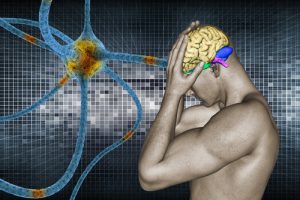Pain is a natural neural reception in our body to identify damage and danger to tissue and the body. It is critical to existence. Still, it is the feeling human beings wish to evade and escape the most. In most cases, the presence of pain is a reminder of an injury or situation that needs to be modified. Whether acute or chronic, various pain pills or medications or pain management techniques can be utilized to minimize pain the discomfort associated with it.

Hypnotherapy can also play a role in reducing pain, especially chronic pain. It does not necessarily remove the pain but allows the mind to dissociate oneself from the root cause and minimize the discomfort. It can also take one’s worries away regarding the primary source of the pain. Hypnotherapy can hence play a key role in helping minimize the discomfort of pain. The article, “How hypnosis can alter the brain’s perception of pain” by Nina Bai examines how pain works and how hypnosis and hypnotherapy can help the brain reconfigure the sensation and associate with it to a less intense level. She states,
“Pain is not simply a peripheral sensation; it’s also how the brain interprets and manages that sensation — and we can do a heck of a lot with our brains to modify our levels of discomfort. Hypnosis allows you to alter perception, to narrow the focus of attention. It also allows you to detach yourself from concerns that might amplify the pain.”
“How hypnosis can alter the brain’s perception of pain”. Nina Bai. April 14th, 2023. Stanford Publishing. Scope
To read the entire article, please click here
Commentary
Hypnosis is a state of focused attention and relaxation. In this state, you are more suggestible and open to new ideas. It’s important to note that hypnosis is not mind control or magic. Instead, it is a tool that can be used to help you access your own inner resources and make changes. When it comes to pain relief, hypnosis can help you manage your pain perception, reduce stress and anxiety, and promote relaxation.
Understanding Hypnosis and How it Works
Hypnosis works by bypassing the critical part of your mind and accessing the subconscious. Your subconscious mind is responsible for many automatic processes, such as breathing and heartbeat. It’s also where memories and emotions are stored. By accessing the subconscious, a hypnotherapist can help you change your thoughts, feelings, and behaviors. This is done through suggestion, visualization, and other techniques.
During a hypnosis session, you’ll typically start by relaxing and focusing on your breath. The hypnotherapist will then guide you into a deeper state of relaxation. From there, they may use various techniques to help you manage your pain perception. For example, they may suggest that you experience a sensation of numbness or warmth in the affected area. They may also guide you through visualizations or affirmations to help you change your thoughts and emotions around pain.
Benefits of Using Hypnosis for Pain Relief

There are many benefits to using hypnosis for pain relief. One of the biggest benefits is that it is safe and non-invasive. Unlike medications or surgery, hypnosis does not have any significant side effects. It also does not require any recovery time.
Another benefit of hypnosis for pain relief is that it can be used in conjunction with other treatments. For example, if you are taking pain medication, hypnosis can help you reduce your reliance on it. It can also help you manage the side effects of medications, such as nausea or dizziness.
Hypnosis can also help you manage the emotional impact of chronic pain. Chronic pain can be isolating and frustrating. It can also lead to anxiety and depression. Hypnosis can help you manage these emotions and improve your overall quality of life.
Techniques Used in Hypnosis for Pain Relief
There are many different techniques used in hypnosis for pain relief. Here are a few examples:
Suggestion
During a hypnosis session, a hypnotherapist may suggest that you experience a certain sensation or feeling. For example, they may suggest that you feel a sense of numbness or warmth in the affected area.
Visualization
Visualization involves imagining a specific scene or image. For example, a hypnotherapist may guide you through a visualization of a peaceful beach or a relaxing forest. Visualization can help you reduce stress and anxiety, which can in turn help you manage your pain.
Affirmations
Affirmations are positive statements that can help you change your thoughts and beliefs. For example, a hypnotherapist may guide you through affirmations such as “I am strong and capable of managing my pain” or “My body is capable of healing itself.”
The Connection Between the Mind and Pain Perception
The mind and body are closely connected, and this connection plays a big role in pain perception. Pain is not just a physical sensation – it is also influenced by thoughts, emotions, and beliefs. For example, if you believe that your pain is unbearable and will never go away, you may experience more intense pain.
Hypnosis can help you change your thoughts and beliefs about pain. By doing so, you can reduce your pain perception and improve your ability to manage your pain.
Conclusion

There are many success stories when it comes to hypnosis for pain relief. For example, a study published in the Journal of Pain found that hypnosis was effective in reducing pain intensity and improving quality of life for patients with chronic pain. Another study published in the International Journal of Clinical and Experimental Hypnosis found that hypnosis was effective in reducing pain and anxiety during medical procedures.
Hypnosis for pain relief may seem unconventional, but it has been shown to be an effective and safe option for many people. By accessing your subconscious mind, a hypnotherapist can help you manage your pain perception and improve your overall quality of life. If you’re interested in trying hypnosis for pain relief, be sure to find a qualified hypnotherapist and approach it with an open mind. With the right guidance, hypnosis can be a powerful tool in your pain management toolbox.
AIHCP offers a four year certification in Clinical Hypnotherapy. The program is online and independent study and open to qualified professionals seeking a four year certification in hypnotherapy.
Additional Resources
“Hypnosis as a Treatment for Pain”. Linda Walter. August 15th, 2019. Psychology Today. Access here
“Hypnosis, Meditation, and Relaxation for Pain”. Mary Anne Dunkin. November 17th, 2022. WebMed. Access here
“Hypnosis: Tool for Pain Management”. Cosio D, Lin E. Hypnosis: Tool for Pain Management. Pract Pain Manag. 2015;15(4). Access here
“Hypnotherapy: What is it and How Can it Treat Chronic Pain?”. Ann-Marie D’arcy-Sharpe February 26, 2020. Pathways. Access here





